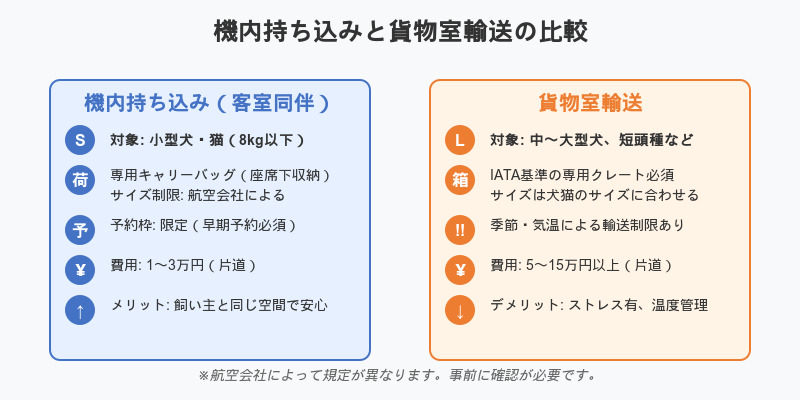Introduction: Current Situation and Issues of Living Abroad with Pets
It is a well-known fact that more and more Japanese people are living abroad amid globalization in many countries around the world. However, many people may have problems such as "I want to travel with my pet dog or cat, but I don't know the specific procedures. ......
For international travelMicrochippingand ... andvaccinationAnd there are various requirements that differ from normal domestic travel, such asOverseas Entry QuarantineMany people find it difficult to gather information, as it involves the airlines, their own rules, and other factors.

When moving abroad with pets, it is very important to prepare in advance for the quarantine rules of each country and the regulations of the airlines!
Therefore, in this article,Necessary preparations and procedures for moving pets from Japan to overseaswill be organized in one step. The major points include "rabies vaccine," "microchip registration," "animal quarantine before departure," "entry rules for each destination," and "airline transport regulations.
Using these as a base, we will use Thailand, EU countries, and the U.S. as examples to give you an idea of specific procedures. Of course, there are detailed differences among countries and regions, so you should always check with the official information of the public organizations and airlines in each country, but this article should give you a good overview.
1. basic flow of taking pets from Japan to overseas 
First, let's keep in mind the rough process of moving from Japan to a foreign country with your pet. The following is a general process and will not differ greatly no matter which country you go to.
1. Microchipping
- An ISO standard (15-digit) microchip is installed at the veterinary clinic. In principle, the chip should be installed prior to vaccination.
2. Vaccinations and medical examinations
- Provide necessary vaccinations, including rabies vaccine. Depending on the country and travel route, a combination vaccine and antibody titer test may be required.
3. Quarantine upon departure from Japan (obtain export quarantine certificate)
- Take your pet to the Animal Quarantine Service of the Ministry of Agriculture, Forestry and Fisheries for inspection within 10 days of departure and have an "Export Quarantine Certificate (English)" issued.
4. Immigration procedures and document preparation for each destination
- For Thailand, an import permit; for the EU, an EU-standard health certificate; for the U.S., confirmation of state regulations. Each of these requirements must be met.
5. Contact airline company and arrange transportation
- Decide whether you want carry-on or cargo compartment transportation and make a reservation. Acceptance regulations and additional charges vary by airline. Be careful with short- and large-breed dogs.
6. Local registration, insurance, finding a veterinarian, etc. after arrival
- Upon arrival, prepare for your new life by registering your license (for dogs), purchasing pet insurance, and finding a family veterinarian.

The first three steps are common to almost every country you need to visit! Without a microchip, rabies vaccine, and proof of export quarantine from Japan, you won't be able to fulfill the entry requirements.
Microchipping → vaccination → quarantine at departure from Japan → preparation of entry documents for destination country → air transportation arrangements → local registration and living arrangements, in that order.
The first three steps in particular are essential no matter which country you are going to.
2. the importance of microchipping and vaccination
Microchipping
The ISO 11784/11785 standard (15-digit) microchip is a well-established method of identifying pets worldwide. If your pet has not been fitted with a microchip in Japan, it is recommended that you do so at least two to three months in advance in preparation for overseas travel.
In many EU countries and Thailand, rabies vaccine should be given after microchippingThis is because the basic premise is that
Microchips are often implanted by a veterinarian through a simple surgical procedure, and cost from 5,000 to 10,000 yen. After implantation, be sure to receive a certificate (in English) with a number on it.
This would be helpful when registering for pet insurance or adding the microchip number to an overseas ID database.

A microchip is a small electronic chip that is implanted under the skin on the back of the neck, and it is used to identify individual pets. It can be installed like an injection, so there is little burden on the pet!
The following article explains microchipping in detail.
Rabies vaccine & Mixed vaccine
– rabies vaccine: Required in many countries. In most cases, entry is denied if inoculation is not completed at least 21 days prior to departure.
– Other Combination Vaccines: Some countries require distemper, parvovirus, and adenovirus for dogs, and FPV for cats. In countries such as Thailand, proof of these vaccinations must be provided prior to travel.

When we moved to Thailand, we had a hard time at the airport because we did not have a mixed vaccine certificate for our dog. We regret that we should have prepared it well in advance.
With the exception of Oceania and Japan, which are considered rabies-free countries, rabies vaccination is highly emphasized worldwide.Please consult with your veterinarian to obtain English vaccination certificates, as additional documentation may be required by some states in the U.S.
The following article explains more about the rabies vaccine.
What is an export quarantine certificate at the time of departure from Japan?
Why do we need it?
Under Japanese law, if you take your dog or cat overseasObtain an "Export Quarantine Certificate" after inspection at the animal quarantine station.It is required. Without this documentation, there is a very high risk of being considered undocumented upon entry into a foreign country.
There are penalties for violations, and in some cases, departure from the country itself is not permitted.

The export quarantine certificate is an important document that proves your pet is healthy and in good condition to be brought overseas!
Inspection Flow
1. Reservation at least 10 days prior to departure: Contact the Animal Quarantine Service of the Ministry of Agriculture, Forestry and Fisheries and make an appointment for the inspection date and time.
2. Prepare necessary documents: Proof of rabies and mixed vaccination, proof of microchip installation, health certificate, etc.
3. Bring your pet to the quarantine station on the day of inspection.: After actually checking the animal's health and documents, if there are no problems, an export quarantine certificate in English will be issued.
This export quarantine itself is free of charge, but the cost of the veterinarian's health certificate and other fees are to be borne by the applicant. Two copies of the document can usually be issued, and it is recommended that one copy be submitted at the time of entry into a foreign country and the other be kept for future use when re-entering Japan.
4. specific examples: Thailand, EU, U.S.
Here are some typical destinationsThailand, EU countries, U.S.A.examples and briefly summarize the differences in procedures. In practice, detailed rules are updated frequently, so be sure to check with official information or an expert.
4-1. Thailand: Import Permit Application and Final Check at the Airport
– Import Permit: Send application documents (R1/1 form, passport copy, pet photo, etc.) to the Thai Ministry of Agriculture by e-mail and receive a Notice of Importation of Animals.
– Vaccine Requirements: In addition to rabies, multiple mixtures such as distemper/parvovirus for dogs and feline parvo for cats are recommended (completed at least 21 days in advance).
– After Arrival in Thailand: Present the import permit, Japanese export quarantine certificate, and passport at the animal quarantine office at the airport (Suvarnabhumi, etc.) and pay a 500 baht fee. If there are no health problems, the animal will pass through on the same day. In principle, there is no quarantine.
Please be especially careful with puppies and kittens, as additional documentation may be required if they are less than 4 months old.
4-2. EU countries: Rabies vaccine + 21 days, antibody titer test in some cases
– Vaccine after microchip installation: At least 12 weeks old, microchipped and then given a rabies vaccine, with a 21-day waiting period from that point.
– Health Certificate (EU standard): To be issued by the Animal Quarantine Service in Japan within 10 days of travel. Some countries (e.g., the United Kingdom) require echinococcus extermination 1 to 5 days prior to travel for dogs.
– Antibody titer test: In many cases, dogs and cats born and raised in Japan are not required, but if they have been in a high-risk country in the past, testing is necessary (e.g., rabies antibody titer of 0.5 IU/ml or higher).

The United Kingdom, Ireland, and Malta have additional rules, so you need to be especially careful! Forgetting deworming or pre-application documents before entering the country can result in a quarantine of up to 4 months.
4-3. U.S.A.: Easy procedure for those from low-risk rabies countries
– Low-risk treatment for rabiesJapan is considered a low-risk country by the CDC (Centers for Disease Control and Prevention) and basically does not require an import license.
– State and local government-specific regulations: Many places require dog license registration within 30 days of arrival, and a certificate of rabies vaccination must be submitted.
– Hawaii and Guam: There is a unique strict quarantine (prior antibody titer testing, waiting, etc.), and entry conditions vary greatly, even for direct travel from Japan.
Some airlines may require a health certificate (Form 7001) at the time of boarding, so it is recommended that you ask your veterinarian to issue one in advance.
| Country/Region | microchip | rabies vaccine | waiting period | Additional Requirements | Entry Procedures |
|---|---|---|---|---|---|
| tai (species of reddish-brown Pacific sea bream, Pagrus major) | indispensable | Required (21 days prior) | nashi (Pyrus pyrifolia, esp. var. culta) | Application for import license, combined vaccine | 500 Baht paid at the airport |
| EU | indispensable | Required (21 days prior) | More than 21 days | Echinococcus extermination by the government | Presentation of EU Health Certificate |
| America | recommendation | indispensable | nashi (Pyrus pyrifolia, esp. var. culta) | Varies from state to state | Quarantine officer confirmation only |
| Hawaii | indispensable | indispensable | confirmation required | Antibody titer test, pre-application | Strict quarantine |
5. air transportation options and cost perceptions
5-1. carry-on or cargo compartment
– Carry-on baggage (with cabin contents): Small dogs and cats weighing up to 7-8 kg are eligible. The carry-on bag must be able to be stowed under the seat. Reservation quotas and additional fees vary from airline to airline.
– Cargo compartment (checked baggage or air cargo): This is used for medium to large dogs and short-breeds, using sturdy crates that meet IATA standards and may not be accepted depending on the season and temperature conditions.
The cost is generally estimated at 10,000 to 30,000 yen each way for a cabin carry-on, and 50,000 to 150,000 yen or more for a cargo hold. The longer the distance, the higher the cost tends to be.

My toy poodle went to Korea as a carry-on. I had to make reservations in advance, but it was nice to know that he was safe and secure at my feet. I think a large dog requires more careful preparation since it will be in the cargo compartment.

5-2. crate training and stress reduction
Whether cargo compartment transport or carry-on, if your pet is not accustomed to a carrier or crate, it can cause a great deal of stress. At least a few weeks to a month in advance.Place the crate in the room and allow it to come and go freely, and instill positive impressions with treats, etc.Let the training begin.
On the day of the flight, make sure to get enough exercise, eat a light meal, eliminate your waste, and stay hydrated before departure. However, a full stomach can cause vomiting, so it is recommended to finish eating 3 to 4 hours before boarding.

Crate training is very important! If your pet has a fear of the crate, he or she will be highly stressed during long flights. Use treats to help your pet get used to it gradually!
The following article explains more about pet crates.
5-3. use of specialized pet transportation companies
If you find it difficult to prepare documents and negotiate in English, or if you have a large dog or a flight through the country, then please contact us,Specialized international pet transportation companyOne way to do this is to request the services of an international pet shipping company. -The advantages in terms of peace of mind are great, as they provide comprehensive support for international transportation of pets, acting for quarantine procedures at departure and entry, providing information and consultation on import and export regulations in each country, and preparing and applying for documents on behalf of the client.
PetAirJPNis a specialized company also covers import license acquisition and quarantine procedures on behalf of the company, and offers customized plans based on its unique know-how.
6. post-departure procedures and local life
6-1. local registration, insurance and vet selection
In many foreign countries, many regions require dogs to be registered with the local government or state for a license, and in some cases, if the application is not filed within 30 days of arrival, a fine may be imposed.
In addition, in countries where animal medical costs are high (such as the United States), pet insurance can reduce the risk of major expenses.Find a local vet you can trustIt is important to maintain good health care by continuing to provide vaccines and parasite control.

When I moved to the US, it cost me over $1000 just to treat my dog's teeth. I was really surprised because I did not have pet insurance. Overseas animal medical expenses are more expensive than in Japan, so I think insurance is a must.
6-2. adaptation to living environment
The house or apartment you are moving to isPets allowedIt is a prerequisite that the property is Some properties may have weight restrictions, head count limits, or require an additional deposit. Because many dogs and cats take time to adapt to their new environment,
– On the first day, don't let a large area go free.Start with a small space where you feel safe and secure.
- Blankets and toys brought from Japan to make them smell like themselves.
- Gradually switch water and food to local products to reduce gastrointestinal strain.
- Be mindful of noise, time zone differences, and other factors to create a calm environment.
Short-headed and older pets are particularly vulnerable to temperature and pressure changes, so consideration should be given to the season and time of day of the move.
7. Frequently Asked Questions (FAQ)
Q1: When should I start preparing for my trip to Japan?
A. At least three months in advance is ideal; in cases where EU antibody titer testing is required, it may take more than six months, so schedule it early with the owner, veterinarian, and quarantine station.
Q2: Can large dogs be carried in the guest room?
A. Most airlines allow only small dogs and cats in the passenger cabin, while large dogs or those overweight will be placed in the cargo compartment. Each airline is different, so be sure to check their regulations in advance.
Q3: Do I need a rabies antibody titer test if I go to the EU?
A. In most cases, pets born and raised in Japan and not staying abroad until they leave Japan are exempt, but it may vary depending on the route and transit point, so you need to check to be sure.
Q4. is it expensive to hire a pet shipping company?
A. Although it may cost several hundred thousand yen, there is the advantage of receiving one-stop support for documentation, customs clearance, and airfreight arrangements. It is worth considering if you are very anxious about moving abroad for the first time, or for the transportation of large or special breeds of dogs.
Q5: What measures are taken to prevent stress in dogs and cats once they arrive in the area?
A. Crate training will greatly reduce the risk of injury. Gradually expand the dog's range of activities from a small space until it becomes accustomed to its new home, and use Japanese food and blankets to make it "smell" its own scent.
Other FAQs can be found in the following pages.

8. PetAirJPN's professional support gives you peace of mind
As we have seen, preparing your pet for travel when moving abroad is more complicated than you might imagine. It is often time-consuming to translate vaccines and certificates, negotiate with airlines, and so on.
That's when you can count on us,PetAirJPNIt is The following strengths allow us to provide support tailored to your individual needs
– Vision: "Together, in any country, all the time."
We keep abreast of the latest regulations and airline requirements to ensure that owners and pets are not separated for international travel.
– Wide range of services
- Agency for quarantine procedures at departure and entry into Japan
- Vaccination and microchipping support
- Manual preparation, document application representation, translation support, etc.
- Arrangement of crates for safe transportation, coordination with local agents
– Customized Plans
We flexibly respond to your dog's breed, age, health condition, time of relocation, and purpose of travel. For example, "I have a large dog and would like to consider carrying it on board," or "I have many layovers and would like to make it as quick as possible.
– Extensive international transportation experience
We have a lot of experience in transporting cargo not only to Thailand, EU countries, and the U.S., but also to Oceania, the Middle East, and other Asian countries. Since we are constantly updating the latest information, we can greatly avoid problems caused by incomplete documents or missed procedures.
9. Summary: How to achieve safe and secure pet migration abroad
It is most important to keep the flow of the microchip -> vaccine -> export quarantine certificate in mind, and to have all the documents and permits required by the destination country.
Point 2: Compare airline regulations and costs
The more you know in advance whether you can carry-on, how much the cargo hold will cost, and whether there are any restrictions during the summer or winter months, the smoother the booking process will be.
Point 3: Don't forget to take care of your child after arrival.
It is important to consider the local living arrangements from the pet's perspective, including license registration, pet insurance, finding a veterinarian, and acclimating to the living environment.
Point 4: Take advantage of professional support.
If you are worried about dealing with documents and English, or if you are concerned about large or short-breed dogs, you can greatly reduce unnecessary risks by consulting with a professional company such as PetAirJPN.
Moving abroad is a big challenge not only for owners but also for their pets. However, if you gather the appropriate information and follow the proper procedures, you will not be separated from your family, and a fulfilling life in a foreign country awaits you.Please use this article as an opportunity to consider early planning and the use of professional support.

A must-see for those who plan to return to Japan with their beloved pets. Complete explanation of preparation, procedures, and necessary documents to avoid 180 days of mandatory detention due to failure of procedures. Important points for a safe return to Japan, as taught by animal quarantine professionals.
References
- Animal Quarantine Service, Ministry of Agriculture, Forestry and Fisheries: To export dogs and cats
- Q&A on bringing dogs and cats out of Japan: Animal Quarantine
- CDC: Importation of Dogs (Rabies-free or Low-risk Countries)
- Bringing an Animal into the U.S. | CDC
- IATA | Live Animals Regulations
- MoveHub: Pet Relocation Costs in 2024
Safe and secure overseas travel with pets.

There are many things to prepare for, such as regulations, required documents, and transportation procedures in each country, which can be very anxious.
PetAir JPN will be there for such anxieties of pet owners and provide full support from travel planning to arrival.
Support in preparing necessary procedures and documents
■ Safe and comfortable transportation options
Reliable support until arrival
Reliable Support System✓ Courteous and experienced staff
✓ Understand and respond to the latest regulatory information from each country
✓ Thorough safety management during transportation
\ First of all, free consultation on line! / /
Consultation is completely free of charge.
Free online consultation is also available.
Weekends and holidays are also available.
Please share your experiences and opinions!

Do you have any experiences or questions about traveling abroad with your pet?
If you have actually experienced this, please share with us the points you took care of in your preparation and any problems you had while traveling. We also welcome questions from those who are thinking of traveling to Japan in the future.
Please feel free to comment on any concerns you may have, such as
Your comments will be of great help to others who are struggling with the same issues. Please share your thoughts and questions in the comments section below!
![Support for pets traveling and moving overseas|PetAir JPN [Official] for international transportation and quarantine procedures for dogs and cats Support for pets traveling and moving overseas|PetAir JPN [Official] for international transportation and quarantine procedures for dogs and cats](https://petair.jp/wp-content/uploads/2024/08/main_logo.png?1765645664)




Comment